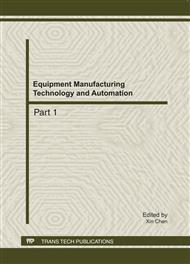p.1337
p.1342
p.1347
p.1353
p.1357
p.1362
p.1368
p.1373
p.1385
Metro Train Comfortableness-Based Operation Curve Simulation
Abstract:
The metro train operation curve reflected the relations between the speed and the location of the train. The energy conservation and the time saving were mainly considered in the conventional metro train operation curve simulation. The metro train traction algorithm was studied and the actual train operation rules were followed to establish the genetic algorithm for optimizing the operation curve of the section, and consider the comfortableness of the section and the actual train operation curve. By stimulating, comparing and analyzing, the train operation curve was created with three elements of energy saving, time saving and comfortableness.
Info:
Periodical:
Pages:
1357-1361
Citation:
Online since:
August 2011
Authors:
Price:
Сopyright:
© 2011 Trans Tech Publications Ltd. All Rights Reserved
Share:
Citation:


